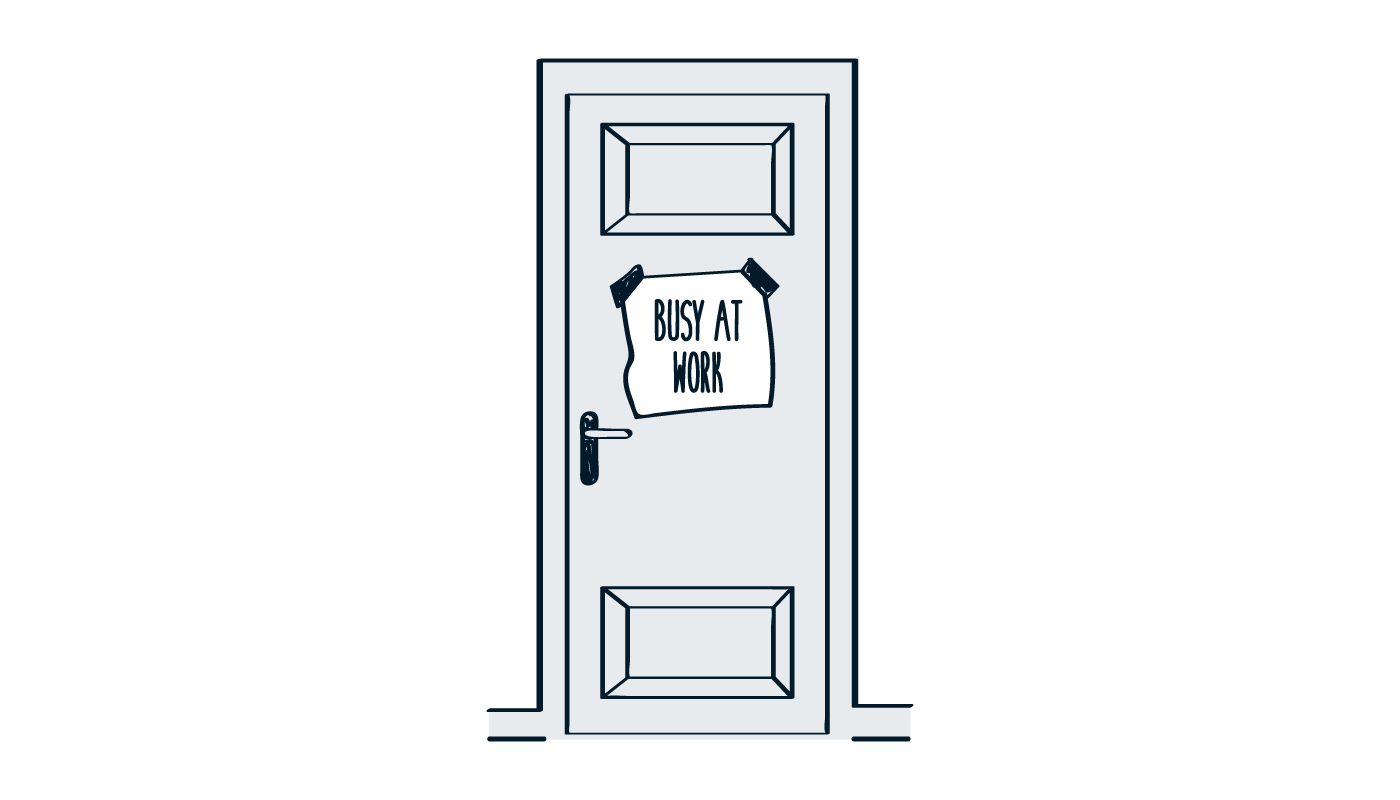
We put a lot of effort into the user experience of our products. How fast our products feel is a big part of this. Speed is not a feature we list anywhere, but it’s up there in the list of top secret features. We’re Enchant, and we build software you can use to communicate with your customers at scale.
It’s 2020. A year like no other. A puny little virus turned the world upside down.
This thing spread like wildfire.
Cities and countries went into lockdown.
Workers were sent home.
People scrambled to hoard necessities.
In a matter of weeks, all the major global economies were hit hard. Companies were operating at a fraction of their normal capacity, if at all. Most companies were forced to close their workplaces, sending everybody home.
Those of us who could work from home had to figure out how to get some kind of home office environment up and running… and quickly!
… but it hasn’t been easy. With family interruptions, frustrated bosses and ever growing to-do lists, how are we supposed to get anything done??
When I first started working from home, I faced many similar struggles. I’ve been doing it now for close to a decade, long before this little virus came by.
In this post, I want to talk about some of the challenges I’ve encountered over the years and I how I overcame them.
Too many people around
One of the biggest challenges of everybody being at home is that there are just too many people around and too many things to easily distract us.

The pandemic has made this worse, since our family has become our coworkers. Try telling your four year old boss that it’s not lunch time yet. Not to mention the well-meaning friends and neighbors who think you’re always available for a chat.
What works the best here is to try to separate your work and personal life, even though you’re at home:
- Create a separate working space, ideally with a door. This is critical. When you work in your working space, it sends a signal to everybody around you that you’re at work and they shouldn’t disturb. If you have little ones running around, then draw and put up a sign for them – a visual reminder that it’s quiet time and they shouldn’t disturb.
- Have a routine. Go to your working space at a set time and come back to your personal space at a set time. The routine will not only help you keep your sanity, but also keep expectations of everybody around you in check.
- Be clear with your friends and family about your boundaries and working hours.
- Educate your kids about the difference between important (homework help) and urgent (the house is on fire) disruptions.
Not enough people around
If you’re stuck at home alone during the pandemic, then the silence and loneliness can be daunting.
When I first started working from home (long before the pandemic), I found myself in this situation a lot, because everybody else had places to be.
Being stuck at home alone all day drove me nuts. Oddly enough, it made it even harder to focus. I needed background noise for my own sanity. At the time, I dealt with this by getting out of the house every day – whether that be to a coffee shop, library or park. For me, the background noise helped a lot.
Today, in a socially distanced world, you could:
- Invite a friend who is also stuck at home to join you in a public place. You’ll feel less lonely and you’ll get an accountability buddy.
- Set up a virtual group that runs through the day with coworkers who are in a similar situation. Whether it be text based (like WhatsApp and Slack) or video based (like Zoom or Meet). This would give everybody involved a strong feeling of community and connectedness.
- Switch on some background noise. A little jazz or even ambient sounds could make a difference.
Poor Ergononmics
Having worked from home for a long time, I’ve had my share of aches and pains and have ultimately learned what works for me.
The technical term for that aching back and painfully stiff wrist is muskulo-skeletal disorder. MSDs are the leading cause of workplace injuries… and that’s for people in offices who have access to fancy ergonomically designed equipment.
It’s a much bigger risk for those of us who are working out of our homes, where there’s a real temptation to slouch on the couch or hammock.
Most of us don’t pay enough attention to ergonomics until it becomes a problem. Our chairs are too high, our seats are too hard or too soft, our monitors are at the wrong height.
You need things to be just right so you can work without hurting yourself:
- Invest in ergonomic equipment. Yes yes, it’s expensive. I know. But better get it now and save yourself from pain that takes forever to go away.
- Get your posture sorted out. Your back should be straight but not rigid. Your head should be balanced, not hunching over or leaning back. Your feet should be flat on the floor.
- Position your equipment correctly. Your arms should be parallel to your desk when using your keyboard. Your screen should be at eye level. Your mouse should be close enough to use it without stretching.
Just remember to move: You weren’t designed to sit in the same position all day. In an office, you’d get up to talk to a colleague or go to a meeting. At home you need to make your own water cooler moments.
And remember to change it up: Your body really doesn’t like to do the same thing over and over. Sitting in place for 8 hours a day is never good. If you have to be in front of the screen all day, then look for ways to change your posture throughout the day. Spend some time standing or some time sitting in a different chair in the house. Some examples of how I change it up while working from home:
- When I’m thinking, I get outside and walk.
- When I need to organize my thoughts, I like to scribble on paper while sitting on a bench or on grass.
- Sometimes I’ll use a full size mouse and keyboard at a desk. Other times I’ll work using a laptop with a touchpad.
Not enough breaks
It’s hard to step away from the computer when you work from home. Just one more message. Just one more email. When work is happening through a screen, there’s this constant pressure to just do that one more thing before getting up. Sometimes time gets away from you and you end up spending hours staring at the screen while stuck in your seat.
But the reality is that work is never going to end… What will happen, however, is that you’ll burn out if you don’t get the breaks you need. Studies have shown that excessive focus can drain your energy and that energy loss can make you less helpful and more impulsive.
And taking a break doesn’t mean checking your Facebook feed. There are much better options:
- Go for a walk. Explore the neighbourhood. Find some green spaces. Feel the warmth of the sun. Many studies point to the cognitive and physical benefits of walking, fresh air and sunlight.
- Take a few moments to do some stretches. Outside, weather permitting.
- Go to your favorite relaxation space in your home. Close your eyes and clear your mind for a few minutes.

You’ll be much more productive once your mind and body get the breaks they need.
Separating work and personal spaces
Although working from your bed may be very tempting, it’s a bad idea. It’s terrible for your back and it messess with any sense of routine you may have had.
Working exclusively in a work space sends important signals. Changing out of your pajams into day clothes can also help keep your subconscious mind in the right zone.
Your mind gets a nudge that it’s time to focus and get serious.
Everybody around you gets a nudge that you’re “at work” and shouldn’t be disturbed. This is especially important with young children, who may not be able identify subtle signs that mommy or daddy are in work mode.
I prefer a working space with a door. This gives me some control of background noise – sometimes I want the background noise for a feeling of connectedness, but other times I need the silence for more focus or for an important meeting.

Pro Tip: If you have a kid at home, have them draw the sign for you - they’re more likely to respect it if they understand it and were involved in making it.
Poor work/life balance
The truth is that work/life balance was already difficult before the pandemic. Whether it be unspoken pressure from work or your own career aspirations, work tends to take a lot more time than it should.
But when 90% of everything you do revolves around the few rooms in your house, the difficulty of separating work and everything else becomes that much harder.
There’s all sorts of life stuff that will distract you from work while you’re at home:
- Your son wants to tell you about the excitement of the moment.
- A mid-day grocery or amazon delivery needs to be put away.
- A neighbour knocks on the door to tell you that you left your garage open.
While you can’t make all the distractions go away, you can definitely plan a routine with separate work and personal hours through the day. This will give you checkpoints to plan your day around but also help set expectations with others in the home.
Most companies undestand the upside down world we’re in and offer lots of flexibilty here. This means that you should able to find a set of hours that work around your both your needs and that of the company.
Try to put some consideration for your break times in the routine. It’s nice to have a family lunch if everybody’s schedules can be aligned :)
Motivation and focus is harder
When you are in an office, everybody around is in work mode. This, alone, gives your system a nudge and encouragement to get into work mode yourself.
At home, when all your comfort spaces are calling and you’re being bombarded by endless distractions through the day, staying focussed can be hard.
Instead of external motivation and nudges, you’ll need to depend more on internal motivation throughout the day.
Here’s what can help keep you focussed and motivated:
- A dedicated work space at home and a daily routine will give your system a nudge at the right time.
- Send regular updates to a common place like a company chat room. The whole team has to be on board with this, but it helps keep everybody moving forward.
- Have a virtual daily stand up. Say what you’re working on, what you plan to have done for the day and what your accomplished the previous day. Setting targets makes you accountable and will keep you progressing through the day.
- Break larger tasks into small pieces on a checklist. It’s motivating to check off items as you’re getting things done. Smaller items on a check list are also easier to take on than bigger ones.
- When you get interrupted with something that’s not truly urgent, write it down and get back to later.
Camaraderie is harder
When you work with the same people every day, you learn a little about who they are and the lives they live. Those spontaneous conversations between meetings or during lunch breaks just don’t happen naturally when everybody is at home.
But it doesn’t have to be this way. Here are some ways to combat the situation and to build camaraderie with a remote team:
- Setup a virtual water cooler where it’s okay for the team to share things that interest them that may not be work related.
- Schedule “lunch meetings” where the team can chose to hang out and video chit chat during lunch break.
- Take breaks during the day where the team can follow an online fitness class and do some exercise together.
- Have a happy hour once a week where everybody grabs their favorite drink and jumps onto a group video chat and talks about anything other than work.
You need a good internet connection
If your internet connection dies, you have effectively taken day off when you didn’t really plan to. Which sucks.
The best thing you can do here is to plan ahead. Make sure you have a contingency plan in place.
Here are some ideas:
- A good data plan that allows you to tether your laptop in case your home internet connection goes down.
- A nearby coffee shop or library that offers internet access.
- A neighbour’s wifi password.
Your company needs to be on board for remote to work
Most companies have scrambled to figure out how to move the entire work force to their homes in the short term. Some have gone one step further and plan to either be partially or fully remote for the long haul.
A company that decides to go fully remote is forced to figure out and come up with procedures, plans and tooling to make everything work smoothly.
With partially remote teams, information flow is hindered for the members that are remote:
- When timezone differences are in play, information just doesn’t reach the remote workers fast enough. By the time they’re able to react, the whole incident may have passed.
- Remote workers can miss out on information that was never written. For example, if people start discussing a meeting topic in the minutes before it actually starts, the remote team mates would be at a complete loss.
To tackle these kind of challenges, a partially remote team really needs to work as if they are fully remote and prefer written communications and virtual meetings to keep everybody on a level playing field.
Take Aways
Right now the world is upside down and we’re doing our best to adapt. Companies everywhere are conducting a global remote-workforce experiment.
Those that figure it out will be at an advantage – able to hire from a global workforce, saving costs on office real estate and avoiding all the inefficiencies of in-person meetings.
Many of us will go back to the office when the pandemic is over.
But for others, work-from-home is here to stay. For them, the bright side is that the time they would have lost in a commute can be redirected to more productive efforts.
The best we all can do during these times is to learn. Understand what you need to succeed at home and build up your own processes and routines. As more companies migrate to remote workforces, there will be a ton of new opportunities for those who prefer working from home.